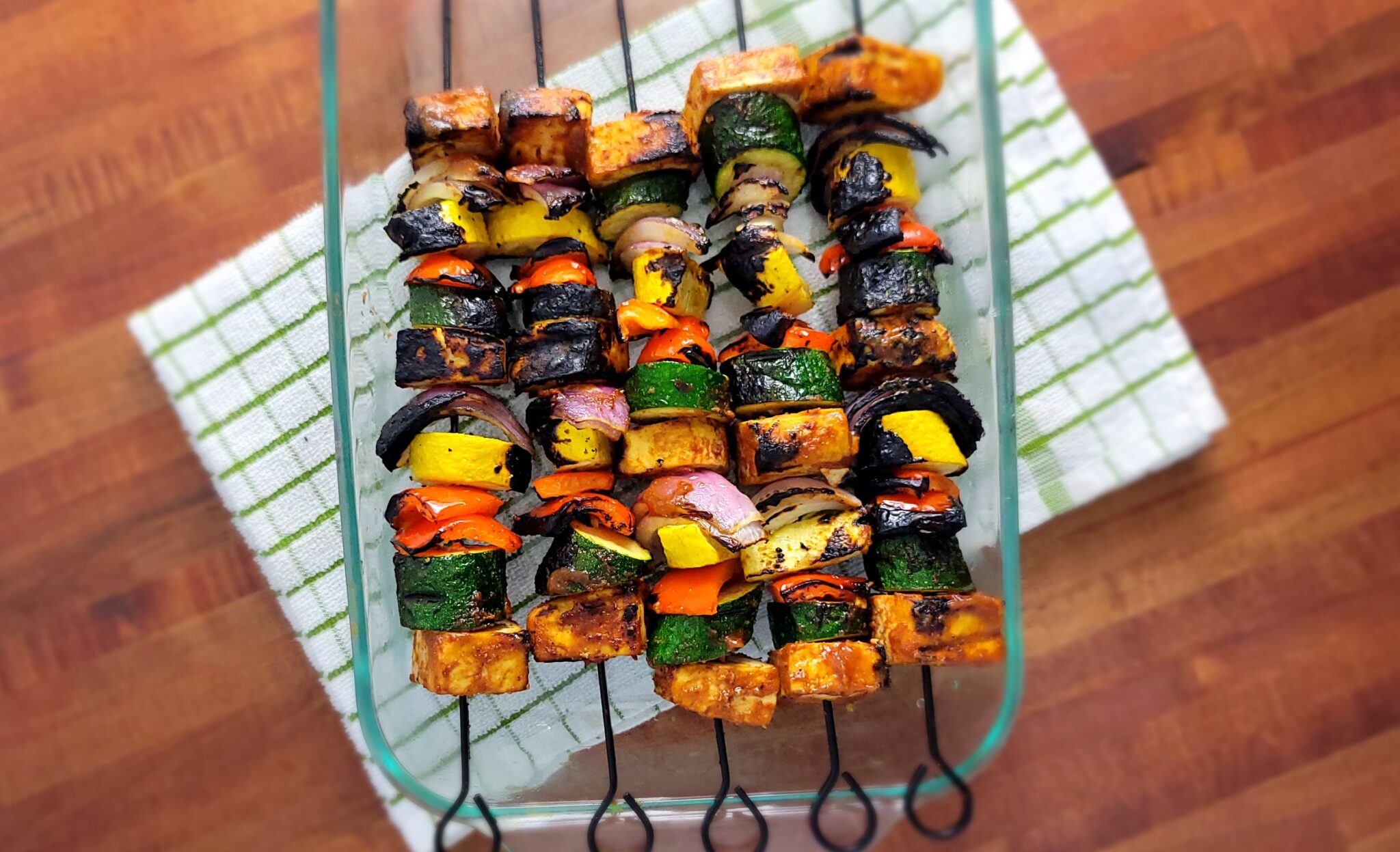Cukebook’s Comprehensive Low Potassium Foods List
Trying to eat a satisfying and healthy diet while on a potassium restriction can feel overwhelming. To help you keep your potassium labs within the normal range, we’ve created a comprehensive list of foods lower in potassium. Learning which of your favorite food options are lower in potassium makes it easier to build your kidney-friendly meals.
In this article, we will provide a low potassium foods list that contain <200 mg of potassium in a half cup serving (unless otherwise noted). It’s important to remember that if you eat a portion larger than listed, it will contain more potassium. For instance, ½ cup of mango is considered low potassium while eating a whole medium-sized mango would be considered high potassium. The lists have been verified from the USDA FoodData Central data system.[1]
1: low potassium foods list: Plant-Based Foods Lower in Potassium
While a diet high in fruits, vegetables, legumes and whole grains is associated with better outcomes for people with kidney disease, these foods can also be a significant source of potassium in the diet. [2] Here are the lower potassium choices in each of these categories.
Fruits
The portion size is ½ cup unless otherwise stated.
- Apple (1 medium)
- Applesauce
- Apricots, canned in juice
- Blackberries
- Blueberries
- Boysenberries
- Cherries
- Cranberries
- Fruit Cocktail, canned
- Grapes
- Grapefruit (½ whole)
- Kumquat, raw (1 small fruit)
- Lemon
- Lime
- Lychee (litchi), fresh
- Mandarin Oranges
- Mango (½ cup)
- Passion fruit (1 whole)
- Peaches, canned (½ cup)
- Pears, canned (½ cup)
- Persimmon, American (1 small fruit)
- Pineapple
- Plums (1 whole)
- Raspberries
- Rhubarb (1 stalk)
- Strawberries
- Tangerine (1 whole)
- Watermelon (limit to 1 cup)
Vegetables
The portion size is ½ cup unless otherwise stated.
- Alfalfa sprouts
- Arugula, raw (1 cup)
- Asparagus (6 spears raw)
- Bamboo shoots, canned/drained
- Bean sprouts
- Beans, green or wax
- Beets, canned (1 beet)
- Broccoli (raw or cooked from frozen)
- Cabbage, green and red
- Carrots, cooked
- Cauliflower
- Celery (1 stalk)
- Corn, fresh (½ ear) frozen (½ cup)
- Cucumber
- Eggplant
- Greens, collard and turnip (½ cup)
- Hominy (canned)
- Jicama
- Kale
- Leeks (1 cup or 1 leek)
- Lettuce (romaine, Boston, iceberg, greenleaf), raw (1 cup)
- Okra
- Onions
- Parsley
- Peas (sugar snap, snow, green)
- Peppers (green, red, yellow, jalapeño)
- Radish
- Seaweed
- Spaghetti squash
- Spinach, raw
- Tomatillo, raw
- Turnip
- Water Chestnuts, canned
- Watercress
- White Mushrooms, raw
- Yellow Squash
- Zucchini Squash
- Legumes, Nuts and Seeds
- Cashews (1 oz)
- Chia seed (2 Tbsp)
- Macadamia (1 oz)
- Pinenuts (1oz)
- Pecans (1 oz)
- Pumpkin seeds (2 Tbsp)
- Sunflower seeds/kernels (2 Tbsp)
- Tofu (3 oz)
- Walnuts (1 oz)
Nut, Seeds, and Legumes
- Cashews (1 oz)
- Chia seed (2 Tbsp)
- Macadamia (1 oz)
- Pinenuts (1oz)
- Pecans (1 oz)
- Pumpkin seeds (2 Tbsp)
- Sunflower seeds/kernels (2 Tbsp)
- Tofu (3 oz)
- Walnuts (1 oz)
Grain and Grain Products
- Good news! Almost all grain products will provide less than 200 mg potassium per serving.
- White or refined grains will almost always have less potassium than whole grains. However, we still encourage you to incorporate whole grain products into your diet because of their superior nutritional value, fiber content, heart-health and blood sugar benefits.
- If you require an extreme potassium restriction, gluten-free substitute products tend to have the least amount of potassium per serving.
2: low potassium foods list: Animal-Based Foods
Many people only try to control potassium by adjusting their fruit and vegetable intake, but If you incorporate animal-based products it’s important to remember that they also provide a significant amount of potassium.
Animal Meats
Portion size matters significantly for potassium content with animal meats. In general, no 3 ounce or greater portions of animal meat (animal protein portions that typically provide about 20-25 grams of protein) will provide less than 200 mg potassium. This doesn’t mean that these foods can’t or shouldn’t be incorporated into a low-potassium diet. In fact, many people on dialysis might need to eat more animal meats to meet their protein recommendations. On the other hand, if you have CKD Stages 3-5 non-dialysis, this can be another motivation to reduce your animal meat intake or decrease your portion sizes to no more than 3 ounces per serving (or about the size of a deck of cards). Remember to consider the higher protein and phosphorus content of meat and dairy products when incorporating in your overall diet.
The following animal meats are the lowest in potassium in a 3 ounce serving:
- Eggs (3 large)
- Deer
- Lobster
- Orange roughy fish
- Shrimp (shelled, cooked)
- Canned white tuna (canned in water, drained)
- Dairy Products Lowest in Potassium
Dairy Foods
- Natural cheeses (1 oz): gruyere, Swiss, feta, fontina, blue, mozzarella, brie, cheddar, parmesan, goat cheese, and more
- Cottage cheese (4 oz)
- Heavy cream
3: Drinks Lower in Potassium
Water is always the best choice for people with kidney disease, but here are some other low-potassium drink choices. The portion size is 8 fluid ounces.
- Fresh-brewed coffee
- Fresh-squeezed lemonade*
- Fruit juices (100% juice): apple, cranberry, grape, pineapple*
- Fresh-brewed teas: green, black and herbal
- Plant-based milks (unfortified): almond, rice, lite coconut milk
- Nectars: apricot, guava, mango, papaya, peach, pear*
- Sodas: club, ginger ale, lemon-lime*
- Sparkling water
*We recommend eating whole fruit most of the time versus drinking juices and nectars and limiting intake of sugar-sweetened beverages.
4: Summary
Hopefully you’ve found this list helpful for making lower-potassium substitutions in your diet. If you would like more information on potassium, check out our Low Potassium Diet guide and Foods High in Potassium article. And as always, consider working with a Renal Dietitian to optimally implement your kidney-friendly diet!
5: References
- U.S. Department of Agriculture, Agricultural Research Service. FoodData Central, 2019. https://fdc.nal.usda.gov/index.html
- Kelly, J. T., Palmer, S. C., Wai, S. N., Ruospo, M., Carrero, J. J., Campbell, K. L., & Strippoli, G. F. (2017). Healthy Dietary Patterns and Risk of Mortality and ESRD in CKD: A Meta-Analysis of Cohort Studies. Clinical journal of the American Society of Nephrology : CJASN, 12(2), 272–279. https://doi.org/10.2215/CJN.06190616

